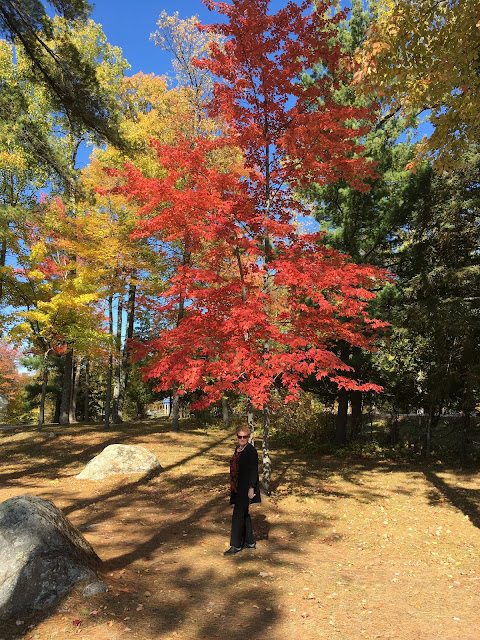LITTLE NORWAY

Last year (2018), we attended a presentation by the author
of the book “Exile Air” explaining the history of Little Norway in Canada. We have
seen the monument near the ferry to Toronto Island Airport, but visited the
memorial in Muskoka last week (October 2019) for the first time.
In 2018 while on the Hurtigruten cruise, my brother Graham
and I visited the aviation museum in Bodo in north-western Norway. We were delighted
to see that they had a large area devoted to Little Norway.
In October, 2019, Pat and I made a quick decision to visit
the memorial at the Muskoka airport between Bracebridge and Gravenhurst, Ontario. It is
an impressive tribute to the courage and determination of Norwegians who fought
against the Nazi tyranny in World War Two.
The history begins at the outset of the war. Initially, Hitler did not wish to invade the Scandinavian countries, but the German navy was concerned about protecting their ships and U-boats that were attacking the convoys delivering war materials to Russia. Hence, in April, 1940, Germany began the occupation of this peaceful sovereign country.
Many of the young men decided to escape to other countries
in order to join the war effort. These brave souls sailed across the North Sea
by boat – a very dangerous voyage due to heavy weather and German patrol boats.
Others took a somewhat safer route crossing the border into Sweden, then on to
Spain and South America and up to Canada in order to train as aircrew.
It is important to realize that funding in full was provided
by the Norwegian merchant marine.
The first base was built on the island which is now Toronto
Island Airport. However, there were some problems with this location. Many Toronto residents claimed that the air traffic was a risk to the city. In
fact, there were accidents. For example, one of the training aircraft crashed
into a ferry. Of perhaps more importance, the young aircrew trainees were
having too much fun exploring the bars and dating the local girls. As a result,
the base was moved to the Muskoka airport where the authorities thought that
the men would live a life of physical fitness in the great Canadian outdoors.
However, the smitten young women discovered that there was a
train that ran to Bracebridge and Gravenhurst every Friday, the so-called (and
appropriately known) “Passion Express.” In fact many of the Norwegians married
local women. Sadly, a number of the wives were widowed due to training
accidents. Some of the ladies later moved to Norway to be with their husbands
and some of the men moved back to Canada after the end of hostilities.
It should be mentioned that further training for many of the
pilots was provided at bases such as Moose Jaw and Medicine Hat (34 Service
Flying Training School) and other operational training units. More than 3000
aircrew and ground crew were trained here in Canada.
On October 16 (2019) the weather forecast looked very good,
so Pat and I decided to drive through Algonquin Park to visit the Harkness
Fisheries Research Center (named after my great uncle, William Harkness) and
then on to Bracebridge. The following morning we drove the short distance to
Little Norway.
What a pleasant surprise it was! The memorial itself is
located in the terminal building. There was a Norwegian flag flying above the
terminal and several plaques and monuments outside. Inside there were many
photos and memorabilia occupying the major part of the passenger area (there
are a couple of scheduled flights per day). We were greeted by a well-dressed
gentleman who asked us if we were there for the ceremony that was to occur in
three hours. It turned out that he was an assistant to the Norwegian Ambassador
who was arriving shortly with a general officer from the Royal Norwegian Air
Force. There was to be a wreath laying just after noon.
 |
| Olaf and John Stene's Daughter |
It was wonderful to see the flag flying over the terminal, to
read the various plaques, and to study the photos of the crews and aircraft. I
had previously made a model of Rolf Arne Berg’s (RAB) spitfire and found a
photo of the original aircraft on the wall that was dedicated to the Norwegian
fighter aces.
We are indeed proud
of our Norwegian heritage!
By the way, the autumn colors were spectacular!




